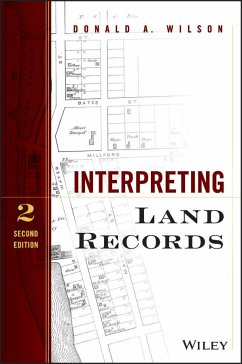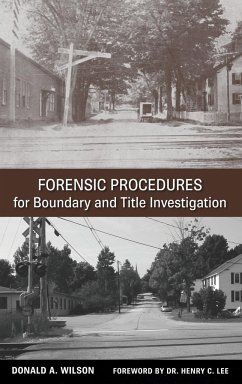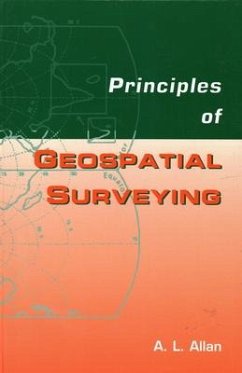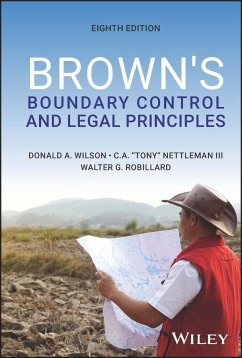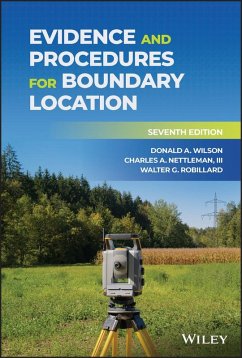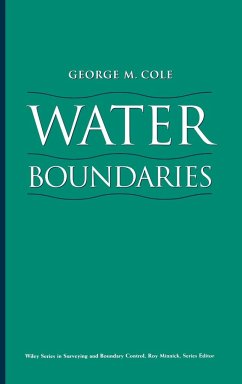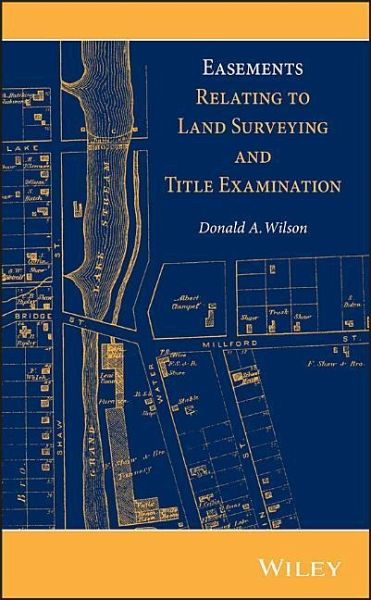
Easements Relating to Land Surveying and Title Examination
Versandkostenfrei!
Versandfertig in über 4 Wochen
97,99 €
inkl. MwSt.
Weitere Ausgaben:

PAYBACK Punkte
49 °P sammeln!
Concise, in-depth coverage of the complex issues of easementsand their reversionThe definition, use, defense, and retirement of easements areareas of active work for land surveyors, lawyers, and the holdersand buyers of easements, such as utility companies and highwaydepartments. Easements Relating to Land Surveying and TitleExamination is the most up-to-date reference that succinctlyand incisively covers easements and reversions, written for landsurveyors and title examiners.This comprehensive guide covers the various forms of easements,their creation, reversion, and termination. Its numerous...
Concise, in-depth coverage of the complex issues of easementsand their reversion
The definition, use, defense, and retirement of easements areareas of active work for land surveyors, lawyers, and the holdersand buyers of easements, such as utility companies and highwaydepartments. Easements Relating to Land Surveying and TitleExamination is the most up-to-date reference that succinctlyand incisively covers easements and reversions, written for landsurveyors and title examiners.
This comprehensive guide covers the various forms of easements,their creation, reversion, and termination. Its numerous casestudies offer examples of situations in which easements resulted inlitigation and reveal how these cases were decided by the courts.The book also includes coverage of undescribed easements andguidance on how to properly write new easement descriptions.
This useful, practical handbook:
* Defines easements and easement terminology
* Covers both right-of-way and right-of-way line easements
* Explains the creation of easements by express grant,reservation or exception, agreement or covenant, implication,estoppel, custom, and more
* Explores all types of easement termination, includingexpiration, release, merger of title, abandonment, prescription oradverse possession, and many others
* Provides thorough descriptions of problem easements, fromundescribed and blanket easements to hidden and rollingeasements
* Offers extensive coverage of reversion of easements, includinghighway-related reversions and rules for locating and definingreversions
* Presents detailed information for land surveyors and titleexaminers on how to handle these easement issues
The definition, use, defense, and retirement of easements areareas of active work for land surveyors, lawyers, and the holdersand buyers of easements, such as utility companies and highwaydepartments. Easements Relating to Land Surveying and TitleExamination is the most up-to-date reference that succinctlyand incisively covers easements and reversions, written for landsurveyors and title examiners.
This comprehensive guide covers the various forms of easements,their creation, reversion, and termination. Its numerous casestudies offer examples of situations in which easements resulted inlitigation and reveal how these cases were decided by the courts.The book also includes coverage of undescribed easements andguidance on how to properly write new easement descriptions.
This useful, practical handbook:
* Defines easements and easement terminology
* Covers both right-of-way and right-of-way line easements
* Explains the creation of easements by express grant,reservation or exception, agreement or covenant, implication,estoppel, custom, and more
* Explores all types of easement termination, includingexpiration, release, merger of title, abandonment, prescription oradverse possession, and many others
* Provides thorough descriptions of problem easements, fromundescribed and blanket easements to hidden and rollingeasements
* Offers extensive coverage of reversion of easements, includinghighway-related reversions and rules for locating and definingreversions
* Presents detailed information for land surveyors and titleexaminers on how to handle these easement issues



